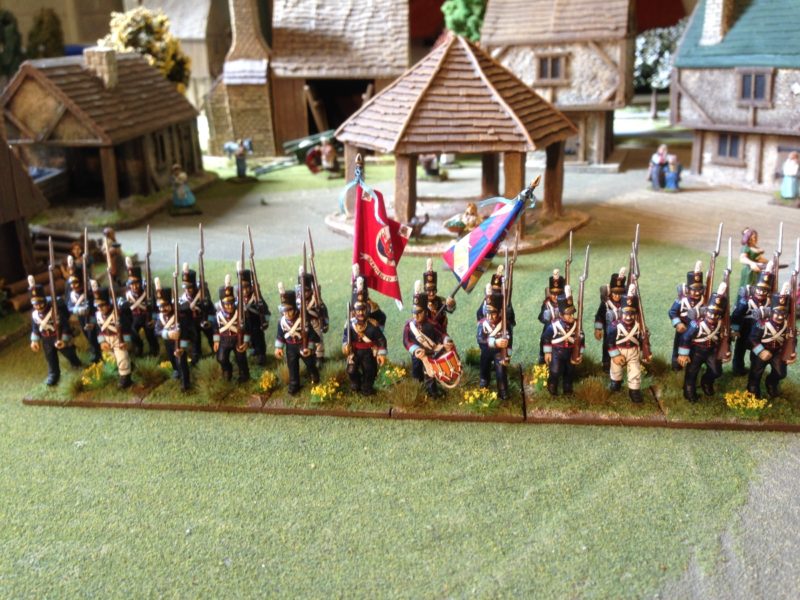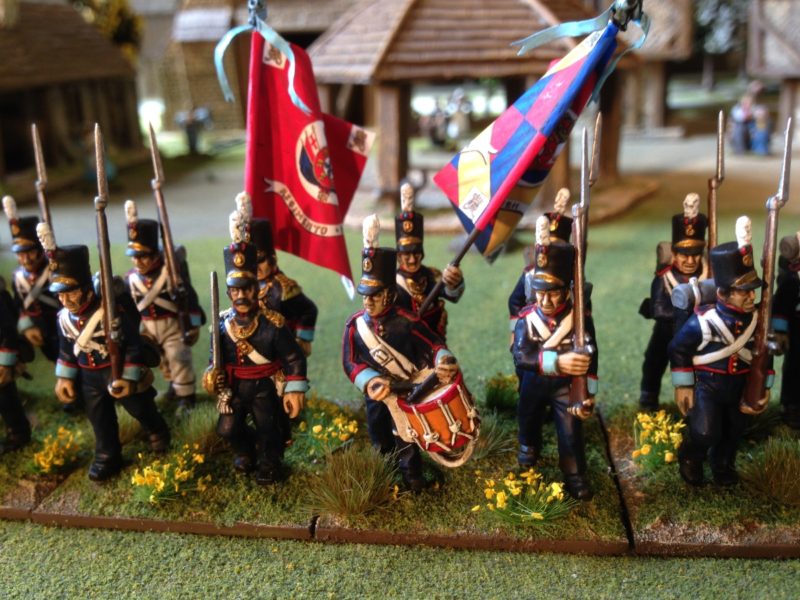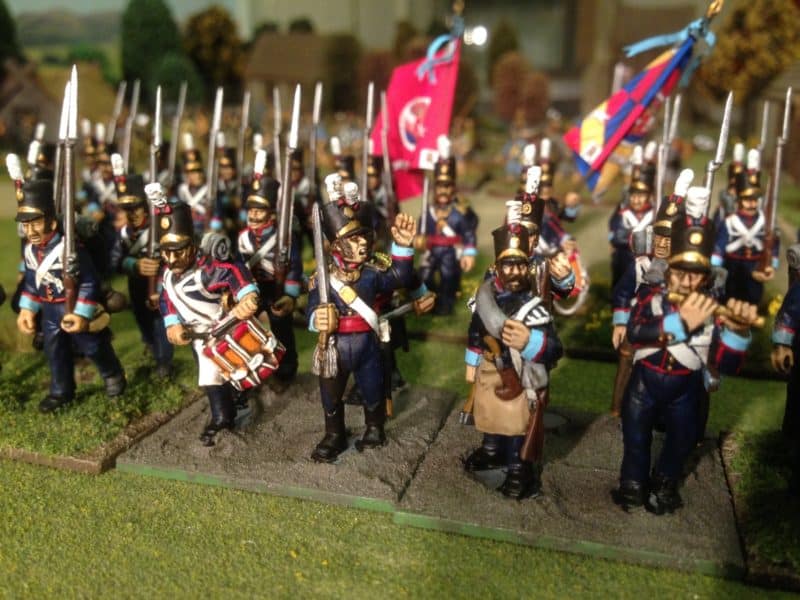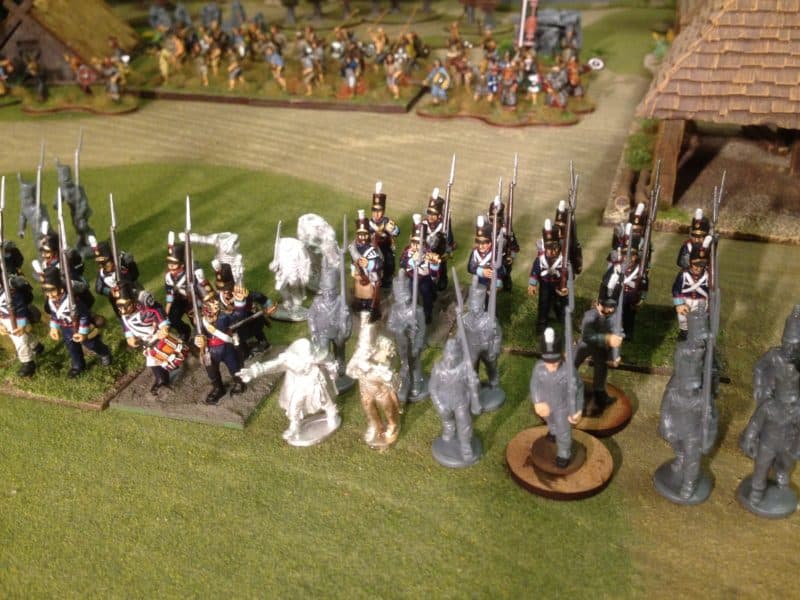
11th Penamacor Regiment
If you read last weeks blog, complete with upside down pictures (Now correct if you read this on a PC but still upside down on an mobile device…) you will know that I have committed to paint a Portuguese Brigade from the latter stages of the Peninsular War. I have spent a little bit more time researching the structure of Portuguese units and as with details of the uniforms, there is a bit of contradictory evidence out there.
The best information that I could find is as follows:
A Portuguese Infantry regiment consists of a small cadre of Head Quarters staff and two battalions of Infantry. The Battalions were composed of 5 companies of men, four of which were Fusiliers and one being a Grenadier Company. I am indebted to a contributor on TMP who has given the detail for the composition of the regiment based on a translation of the actual 1810 regulations:
A regiment composes a headquarters staff, and two battalions, each of five companies, one of grenadiers and four of fusiliers.
The detail which goes on from this shows the entire 36 personnel establishment for the Headquarters, identifying 24 regimental headquarters staff (including medical and musicians) plus 6 staff for each of two battalions of 1 major, 1 adjutant, 1 quartermaster, 1 sergeant major, 1 quartermaster sergeant and 1 standard bearer.
The detail then shows the structure for each company of 4 officers, 6 sergeants, 140 corporals and soldiers and 2 drummers (a total of 152 per company).
When it came to the distribution of the flags, it seems that they had one King’s colour and one Regimental colour per Regiment. It is generally assumed that the 1st battalion carried the King’s colour and the 2nd battalion carried the Regimental colour.
This information is confirmed elsewhere, although different versions and strengths for the Companies are also given. As usual, I tend to go with the set of ‘facts’ that best fit my purpose, which is to produce a set of figures for the wargames table in general and units for Black Powder rules specifically.

Command Group 11th regiment
So, as I had previously decided, with 5 companies of 152 men per company, it seems that the theoretical battalion strength would be about 750 men, making it similar in size to a British battalion. In which case, a unit of 24 men will be about right for my Black Powder units. The composition of my Battalion units do not worry me unduly when it comes to representing individual companies or officers present. I know that some wargamers get hung up on whether they should use say, one figure for 20 men, but that all falls apart when it comes to the officers, ensigns, musicians and NCO’s. So long as these are represented in some way, I’m happy!

23rd Almeida Regiment – nearly complete.
One final thought to add into the mix is that during the re construction of the Portuguese Infantry force undertaken by William Beresford, a small number of British officers and Sergeants were transferred into the Portuguese Army. This meant that there was at least one British officer at the top of the regimental command structure. On 6th July 1811 there were approximately three British officers in each of the battalions.

23rd Almeida Command Group – basing not quite complete.
With all of the above in mind, my task is now to complete the modelling and painting of a typical Portuguese Brigade. As I have previously painted 24 figures for the 11th Penamacor Regiment and I am about to complete the 23rd Ameida Regiment it is just a question of adding another 24 to each Regiment to bring them up to strength. At first I was somewhat daunted by the thought of committing to this task but armed with the above information I felt that I had to complete the brigade as it would have appeared at Salamaca and other subsequent battles.

The battalion expands
The good news is that there are some opportunities for adding a bit of variety. The obvious being to include a British officer with each battalion. I’ve also challenged myself to have this part of the project complete by the end of November. In next weeks blog, I’ll add some more detail to the composition of my brigade and perhaps add some detail of the Brigades exploits in the Peninsular.
